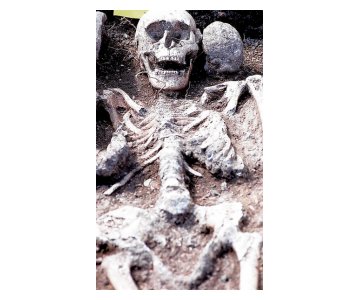 A study of more than a thousand skeletons dating from between the 8th to the 17th Century shows that medieval Irish women of advanced years suffered arthritis like we do today however those who suffered from osteoporosis tended to be fitter than modern day sufferers of equivalent age.
A study of more than a thousand skeletons dating from between the 8th to the 17th Century shows that medieval Irish women of advanced years suffered arthritis like we do today however those who suffered from osteoporosis tended to be fitter than modern day sufferers of equivalent age.
“These clues could have vital implications for how we regard exercise in the treatment of osteoporosis today,” says Dr Carmel Silke of the Irish Society of Rheumatology
Thousand year old skeletons unearthed from a “lost” medieval graveyard in County Donegal are providing vital new clues which could change the way doctors treat osteoporosis and other bone diseases in Ireland, the Irish Society for Rheumatology can reveal.
At its national meeting to be held in Sligo next weekend, the ISR will hear how a study of more than a thousand skeletons dating from between the 8th to the 17th Century shows that medieval Irish women of advanced years suffered arthritis like we do today however those who suffered from osteoporosis tended to be fitter than modern day sufferers of equivalent age.
Experts believe that a possible reason for this difference is the fact that those older people who suffered from softening and thinning of the bones in medieval times tended to be far more physically active than their modern counterparts.
The revelations are contained in a paper to be delivered at the Sligo Clarion Hotel next weekend by Dr Catriona McKenzie of Queens University Belfast who, along with The Institute of Technology in Sligo, has been examining the bones contained in the Ballyhanna graveyard in Donegal which was rediscovered after having been lost for centuries. A total of 1,280 skeletons have been uncovered.
“These clues could have vital implications for how we regard exercise in the treatment of osteoporosis today,” says Dr Carmel Silke of the ISR. Furthermore, Dr McKenzie has studied the presence of arthritis in these skeletons. Common joint diseases, such as osteoarthritis and rheumatoid arthritis, have affected humans for thousands of years. However, it is only in recent decades that revolutionary treatments have altered the disease course, allowing such patients to lead normal lives.
“This year our conference is entitled “Rheumatology in transition” and most of the speakers will be from the Island of Ireland given the many radical transformations and research now taking place Irish Rheumatology.”
High on the agenda is the treatment of rheumatoid arthritis in young people.
“People forget that children also suffer from debilitating diseases like arthritis,” says Dr Silke. The challenges are to be outlined in a paper by Dr Orla Killeen of the National Children’s Hospital in Crumlin, who was until recently the only paediatric rheumatologist practicing in all of Ireland.
The Conference, which will run on September 29 and 30 will also include the following talks: Rheumatoid Arthritis – A Disease in Transition by Prof Iain McInnes, Establishing a Database – Time to Stop Talking by Dr Austin Stack and a paper on the subject of Pharmacoeconomics (the cost of treatments for rheumatoid arthritis) delivered by Dr Roisin Adams. There will also be a debate between Mr Derek Bennett and Professor Geraldine Mc Carthy on the optimal management of osteoarthritis.
ENDS
The Irish Society of Rheumatology National Meeting will take place in The Clarion Hotel, Sligo September 29 – 30,
Tags:






